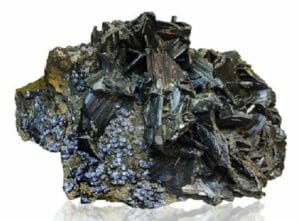What Are Rocket Ships Made Out of
Rocket Ships



When it comes to picking the right materials for building spacecraft, a number of vital factors go into consideration. For instance, the materials used depend on its ability to withstand heat and cold, the weight and strength of the material, the need for low temperatures in the liquid fuel systems, or high temperatures in the combustion section. All these criteria go a long way to determine the suitability of the material for any spacecraft.
The same applies to rocket ships. However, the type of materials used in building rocket ships may vary depending on what part of the rocket the material goes to. The body of the rocket, for instance, needs to be light to give the spacecraft a better chance of escaping the earth's gravitational pull during launch, without burning much fuel. The mainframe of the rocket also needs to be hard enough to withstand heat at the point of re-entry into the earth's surface (if the rocket ship is meant to re-enter the earth's surface).
By and large, materials such as high-grade aluminum and its composites (titanium, ceramics, carbon, and carbon composites), and alloys of different materials, such as steel, silica fibers, etc., can go into building rocket ships. Each of these materials plays a different yet important role in ensuring the ships function optionally.
This article reviews some of the most common materials used for rocket ships and their particular importance.

#1 Aluminum
Ever since man began to venture into space, aluminum has remained an integral choice of material for building space ships. Aside from being the most abundant material on earth, aluminum is highly reactive so much so that it's hardly ever found in its pure form. Hence, aluminum is mostly discovered in combination with other substances. Aluminum and its alloys have found significant application in several different spheres like in rocket ships, airplanes, and other spacecraft.
Aluminum is still the number one choice among space experts for building airplanes and several other spacecraft types. This is because aluminum can undergo and withstand extreme conditions such as high pressure and low temperatures. Also, it is a lightweight material, which is a basic requirement for any material fitting for the space environment. No wonder why it's a choice material for NASA experts.
NASA recommends using aluminum in rockets mainly because of its function as a thermal blanket in combination with titanium, gold, and nickel to reflect away the heat of the sun. It is also used as protection against radiation in metal reflectors. Metal reflectors consist of several materials, including aluminum, and their primary role is to maintain the temperature of the space item around which they're wrapped.
#2 Titanium
Titanium is a highly-coveted metal in the metallurgical engineering space. But even beyond engineering, it has several interesting applications. For instance, in medicine, titanium makes for a good replacement for bones and cartilages. In rocket ships, jets, and airplanes, the alloys of titanium and other metals are used as substitutes for aluminum because of its strength, lightweight, and resistance to heat and corrosion.
When titanium is alloyed with aluminum and vanadium, it is used to build firewalls, rotors, hydraulic systems, compressor blades, the body, and other components of space ships.
Titanium 6AL-4V alloy (space-grade titanium) is present in almost 50% of all spacecraft. Like aluminum, titanium is used extensively in rocket ships because of its high tensile strength to density ratio, resistance to corrosion, and ability to withstand high temperatures in space. However, as wildly as titanium can be used, the high cost of the material, relative to others, like aluminum, may be a limitation to its use.
#3 Steel
Steel is another common material used in building rockets, though not as extensively as aluminum and titanium. Aluminum is about 2.5 times lighter than steel, but steel is also approximately 2.5 stronger.
Steel isn't just any type of material. To begin with, steel is an alloy, meaning that it's a combination of iron and other relevant materials like manganese, carbon, sulfur, and, sometimes, chromium, nickel, and titanium. In the '60s, steel was used in the Atlas series of rockets even before aluminum and titanium became the choice materials.
Stainless steel has more chromium content than most other kinds of steel, which makes it extremely resistant to high temperature and corrosion. This explains why it serves as its own thermal shield, especially for re-entry into the earth's surface. This is one of the reasons why the new Starship spacecraft built by SpaceX uses stainless steel 301, instead of carbon fibers and aluminum. For instance, on average, the stainless steel Starship can withstand temperatures up to 3000 °F.
However, according to the CEO of SpaceX , Elon Musk, using stainless steel isn't just because it can withstand higher temperatures than aluminum and carbon fiber composites, but also because it's cheaper.
Another significant benefit of using stainless steel in the Starship rocket is that the amount of heat shielding needed in the rocket is drastically reduced.
In Conclusion
There are several other materials used for rocket ships, including silica fibers, carbon fibers, etc. However, the most common among all of these are aluminum, titanium, and steel, which is related to their affordability and ease of use. Stanford Advanced Materials is a great place to obtain these materials of the best quality.
What Are Rocket Ships Made Out of
Source: https://gineersnow.com/engineering/materials/3-most-common-materials-used-for-rocket-ships
0 Response to "What Are Rocket Ships Made Out of"
Post a Comment